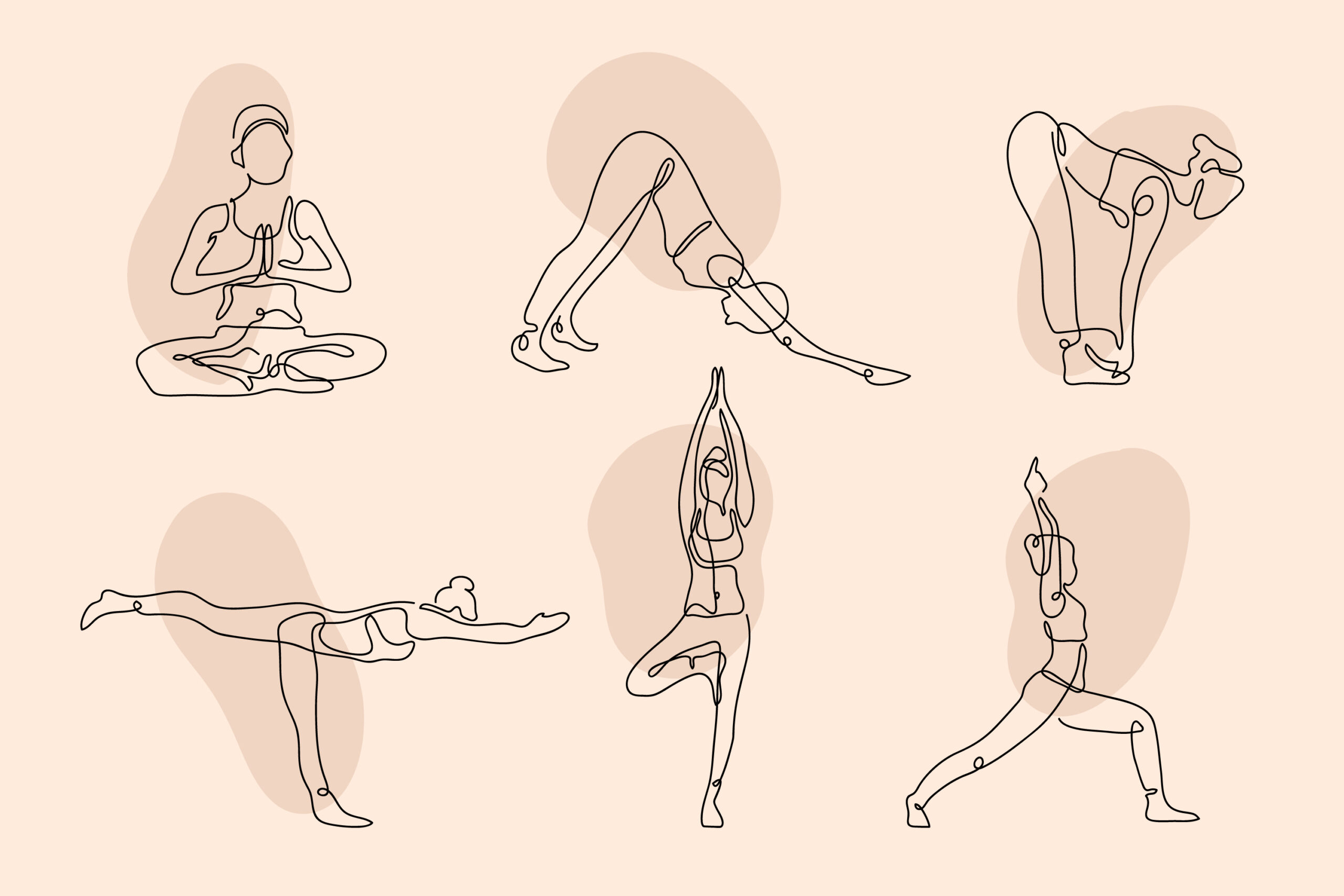Yoga is not just a series of physical exercises; it’s a rich tapestry woven with mythology, history, and symbolism. Each asana (pose) carries a story, shedding light on yoga’s profound depth and the wisdom of ancient yogic traditions. Here’s an exploration into the stories behind ten beloved yoga poses, revealing the narratives that have shaped them over centuries.
1. Tadasana (Mountain Pose): Tadasana, the foundation of all standing poses, symbolizes the strength and stability of a mountain. It teaches the practitioner to stand with steadiness and poise, embodying the immovable and enduring qualities of a mountain amidst life’s constant changes.
2. Vrikshasana (Tree Pose): This pose represents the graceful, yet strong stance of a tree. The balance required in Vrikshasana reflects the need for grounding through the roots (feet) while reaching for the sky (hands), signifying the balance between staying grounded and aspiring for the highest.
3. Virabhadrasana (Warrior Pose): The Warrior series, comprising Warrior I, II, and III, is named after the fierce warrior Virabhadra, an incarnation of Lord Shiva. These poses symbolize the spiritual warrior who battles ignorance and ego, representing strength, focus, and the courage to confront life’s challenges.
4. Bhujangasana (Cobra Pose): Bhujangasana emulates the raising hood of a cobra. It symbolizes the awakening of Kundalini, the spiritual energy at the base of the spine, indicative of rising consciousness and the shedding of one’s ego as the snake sheds its skin.
5. Savasana (Corpse Pose): Often used for relaxation at the end of a yoga session, Savasana symbolizes death as a metaphor for letting go. It’s a reminder of the impermanence of life and an invitation to release tension and surrender to the present moment.
6. Adho Mukha Svanasana (Downward-Facing Dog Pose): This pose resembles a dog stretching with its head down and back up. It teaches humility, allowing one to turn inward for reflection while also rejuvenating the body and calming the mind.
7. Sirsasana (Headstand): Known as the king of all asanas, Sirsasana symbolizes reversing the pull of gravity and the flow of life. It’s said to stimulate the sahasrara (crown chakra) and is believed to promote mental clarity, concentration, and improved blood flow.
8. Garudasana (Eagle Pose): Named after the mythological king of birds, Garuda, this pose represents focus and determination. The eagle is a symbol of freedom and spiritual aspiration, and practicing Garudasana can help unlock the subtle energies within the body.
9. Natarajasana (Dancer’s Pose): This pose is named after Lord Nataraja, the dancing form of Lord Shiva. It represents cosmic creation and destruction, the balance of life and the connection between earth and sky, inviting an exploration of balance, concentration, and strength.
10. Balasana (Child’s Pose): Symbolizing a return to the womb, Balasana is a pose of surrender and humility. It represents the child-like state that is free from ego and full of acceptance and innocence, promoting relaxation and a sense of security.
11. **Sukhasana (Easy Seated Pose):** Often the starting position for meditation and pranayama practices, Sukhasana is more than just a simple cross-legged position. Its name comes from the Sanskrit words ‘Sukha,’ meaning pleasure or ease, and ‘Asana,’ meaning pose. This pose embodies the quest for inner peace and calmness, representing a harmonious connection between the body and mind. Sukhasana is a reminder of the simplicity and tranquility that can be found within each of us. It encourages an upright spine, an open heart, and a groundedness that prepares the practitioner for deeper introspection and stillness. As one sits in Sukhasana, the pose invites a meditative state, encouraging the practitioner to let go of the complexities of the mind and embrace the present moment with ease and joy.
Each of these poses, with their rich symbolism and storied pasts, offers more than just physical benefits. They provide a gateway to connect with the ancient wisdom of yoga, inviting practitioners to embark on a journey of self-discovery and spiritual growth, one asana at a time.

